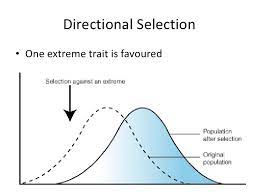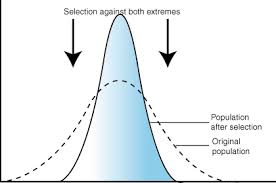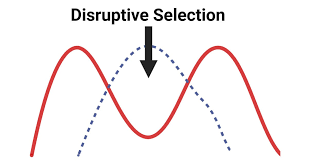unit 4: Genetics & evolution
1/112
There's no tags or description
Looks like no tags are added yet.
Name | Mastery | Learn | Test | Matching | Spaced |
|---|
No study sessions yet.
113 Terms
3 forms of DNA
1. DNA 2. Chromatin 3. Chromosome
Trophic level
an organism’s relationship to energy and means of consuming; grouped by shared characteristics
Gonads
organs that produce gametes (both XX and XY)
Ducts
tubes that deliver + store gametes (both XX and XY)
ovaries
XX: gonad; store follicles that contain dormant eggs (watiing to be stimulated by a hormone to release an egg to develop through meiosis0
uterus
XX: womb; site of pregnancy; where embryo develops; contains many blood vessels to nourish fetus; very muscular (allows for expansion)
after how long is an embryo called a “fetus”
8 weeks
Cervix
separation between uterus and vagina
vagina
muscular chamber; serves as birth canal; repository for sperm during sex
vulva
collective term for external genitalia; protects internal reproductive system
Fallopian tubes
connect ovary to uterus; location where sperm + egg meet (“fertilization”); ducts
Differences b/w mitosis and meiosis
4 non-identical cells vs 2 identical daughter cells
Meiosis when homologous pairs align, they are stacked (not linear) → whole pairs are separated from each other during A1 (not separate chromatids until A2)
What types of cells can undergo Meiosis vs Mitosis
Meiosis: germ cells (produce sperm / egg)
Mitosis: somatic cells (typically body cells)
3 parts of a chromosome
Chromatid: identical half of chromosome
Centromere: point of attachment b/w sister chromatids ( attached to spindall fibers during cell division )
Telomere: protective caps on ends of chromatids
n [haploid #]
½ normal amount of DNA (found in gametes, 23 chromosomes; 23 unique chromatids)
2n [diploid #]
Normal amount of DNA, 46 chromosomes (23 homologous pairs); 46 unique chromatids
4n [tetraploid#]
Double normal amount of DNA, only during cell division, 46 chromosomes; 46 pairs of sister chromatids = 92 total chromatids
Heredity
Passing down traits through reproduction (sexual asexual) fromto parent offspring generation
Gene
Basic unit of heredity (section of DNA that codes for a particular protien) • proteins give individuals + cells (thrnough gene expression ) their unique characteristics
Allele
One of the possible forms a particular gene can take
Genotype
Coded DNA (alleles) an organism has
Phenotype
How the combo of alleles presents itself in the traits you have (physical traits / appearance)
Homozygous
When an organism has 2 of the same alleles for a given trait
Heterozygous
When an organism has 2 different alleles for a given trait
Mendel'S 4 principles of genetics
Factors, dominance, segregation, independent assortment
Mendel'S principle of factors
2 “factors” (alleles) control for each trait; 1 factor came from each parent
Mendel'S principle of dominance
• Options for each factor (allele) that determine characteristics
Dominant →”masks” other traits (always expressed)
Recessive → masked by dominant (only shows up when alone)
Mendel'S principle of segregation
Factors (alleles) of the parents split during reproduction merits bring factor from each parent) [get either, R or r from Rr in a parent)
Phases of the cell cycle
G0, Interphase (G1, S G2), Mitosis (PMAT), Cytokenesis
Cell cycle: G0 phase
regular cell activity
cell cycle: Interphase- G1 phase
cell grows in volume to prep for division; organelles duplicated + more cytoplasm
2n
DNA in chromatin form
cell cycle: Interphase- S phase
DNA is duplicated (chromatin form)
4n
cell cycle: Interphase- G2 phase
cell keeps growing; centrioles form
4n
Cell cycle: Mitosis- Prophase
DNA goes to chromatid form (1 chromosome = 2 chromatids); nuclear envelope starts dissolving; centrioles start making spindle fibers (only in animal cells)
Cell Cycle: Mitosis- Metaphase
centromeres of chromosomes line up across middle of cell; spindle fibers attach to centromeres
spindle fibers pushing against each other to elongate the cell
Cell cycle: Mitosis- Anaphase
sister chromatids separate; spindle fibers pull them to opposite sides of cells (phase ends when sister chromatids are in 2 equal groups at opposite ends of the cell)
spindle fibers pushing against each other to elongate the cell
cell cycle: Mitosis- Telophase
nuclear envelope starts to reform; chromatids return to chromatin form
spindle fibers pushing against each other to elongate the cell
Cell cycle: Cytokenesis
cell officially divides into 2 daughter cells
2n (each)
Mitosis
division of a cell into 2 identical daughter cells
Meiosis
Division of one cell into 4 non-identical daughter cells (n each)
only for gametes
Chromosome condition for producing viable offspring
both parents must have same number of chromosomes (different species have different numbers which is why for ex a turtle cant breed with a duck)
Meiosis: Metaphase 1
Homologous pairs align (*stacked*) (random- top codes for different trait than bottom)
4n
Meiosis: end result of Telephase 1
top half now codes for different traits than bottom half → 2 non-identical daughter cells 2n each)
Meiosis: Metaphase 2
individual chromosomes, (each have two sister chromatids), align along the middle of the cell; spindle fibers attach (2n) x2
Meiosis: Anaphase 2
sister chromatids pulled to opposite ends of cell (2n) x2
name for general gamete production
gametogenesis
oogenesis
female gametogenesis: 1 cell → 4 gametes (1 viable egg + 3 polar bodies)
occurs in the ovaries
oocyte
XX germ cell; dormant diploid or haploid (depending on stage) cell stored in every follicle of ovary
ovulation: 1 oocyte stimulated every 28 days by FSH (follicle stimulating hormone) to start meiosis [at menopause FSH not signaling anymore]
Primary oocyte = 2n, Secondary oocyte = n
testes
XY gonads; site of sperm formation; housed in scrotum (external)
optimal temp. for sperm formation is 96 deg F (scrotum contracts / relaxes to maintain this temp)
Epididymis
stores sperm
vas deferens
duct that transports sperm from epididymus to urethra prior to ejaculation
glands in XY reproductive system (3)
Seminal vesicles, prostate, bulbourethral gland
contribute semen (nourishing fluid) for sperm; balance acidity of vagina
semen = 90% nourishing fluid, 10% sperm
spermatogenesis
XY gametogenesis; germ cells undergo meiosis to form 4 haploid sperm (gametes) ~ 10 days
occurs in seminiferous tubules of testes (continuously replenishing cells)
mature sperm become motile (flagella) and wait
differences in meiosis in oogenesis vs spermatogenesis
Oogenesis: unequal- one big haploid cell with most cytoplasm and organelles + 3 polar bodies
Spermatogenesis- 4 equally viable cells (just nucleus and mitochondria for energy)
grandmother hypothesis
menopause happens because older females put their energy towards ensuring their offspring survive so genes are passed on (instead of putting their energy towards reproducing)
Who is considered the “father of modern genetics” and what did he first experiment on?
Gregor Mendel; pea plants
Mendel’s principle of independent assortment
random chance of inheriting EITHER “factor” (allele) from parental generation
each allele has an equal chance of passing on (“mix and match”)
creates genetic diversity
heterozygous genotype
2 different alleles (Rr)
Homozygous genotype
2 of the same alleles (RR or rr)
Codominance
(Mendel Exception) 2 alleles equally dominant → both expressed at same time (ex. ermine chicken- 2 colors)
BB = black; B1B1 = white → BB1 = black + white (genotype considered heterozygous)
Incomplete dominance
(Mendel Exception) neither allele is completely dominant; heterozygous phenotype is a blend
rr = red, r1r1 = white → rr1 = pink
multiple alleles
(Mendel Exception) >2 possible alleles for a gene
ex rabbits: (in order of dominance) R = full, rch = chinchilla, rh = himalayan, r = albino
polygenic traits
(Mendel Exception) 2+ separate genes interact to determine one trait
creates continuos variety (spectrum)
ex: human height → if 7 genes code for heights there’s 128 combos for various heights
Linked genes
(Mendel Exception) genes that are structurally close on the same chromosome (less likely to be split)
ex. blond hair + blue eyes linked
crossing over
(Mendel Exception) in meiosis during M1, parts of different chromosomes can be swapped → makes 4 different chromatids (increases genetic diversity)
reason for “linked genes”

environmental influence
(mendel exception) environment (interactions/ signals) plays a role on gene expression
ex: human height → more calories have led to taller heights
sex-linked traits
(mendel exception) 1 of the 23 chromosomes in gametes is a sex-linked chromosome → some traits are only linked to the sex chromosome (XX or XY)
ex. colorblindness found on X chromosomes so men are more likely to have it (women less since if one X is not colorblind then it will dominate; men only have one X)
autosome
non-sex chromosome (humans have 22 pairs of autosomes and 1 pair of sex chromosomes)
karyotyping
pre-birth scan of chromosomes for genetic issues (can also tell sex)
population
organisms of the same species that interbreed and live in the same space at the same time
gene pool
combo of genes + alleles present in a population (not always expressed)
What were Darwin’s 5 observations for where species originate (defies “special creation”)
Diversity of life, fitness, diversity of fossils, environment changing, more variation in domestic environments
Darwin Observation: Diversity of life
organisms living in different geographic locations but similar habitats are similar;
differing species in close proximity (generally lots of diversity)
Darwin Observation: Fitness
everything is good at surviving (but in different ways) → driven by selection pressures; have adaptations to survive in their specific niche
Darwin Observation: Diversity of Fossils
some extinct species are similar to living ones in the same places (adaptation / evolution)
Darwin Observation: Environment is changing
causes adaptation (can be more/ less beneficial to survival) → die off or evolve
Darwin Observation: more diversity in domestic environments
due to domestic organisms (ex. dogs) not having to care for themselves / “survive” as much as wild organisms → more opportunity to breed
evolution
a change in a population’s genetic makeup (allele frequency) over time (millions of years)
*idea that species come from ancestral (extinct) species
4 drivers of evolution
Natural selection, genetic variation / mutation, migration/ gene flow, drift
Natural selection
individuals with favorable traits survive / reproduce at higher rates than individuals with less favorable traits —> favors those with higher Fitness
driven by competition + environmental change
more survival = better change of passing down favorable traits
Directional natural selection
population trend shifts in one direction (towards one extreme)

stabilizing natural selection
mean/ avg trait is selected for

disruptive / divergent natural selection
both extremes selected for (leads to speciation) (both extremes beneficial)

artificial selection
taking the best (favorable traits) members of a population and breeding more (form of genetic modification)
Genetic mutation
the “raw materials” (including sexual reproduction) that allow for evolution (traits that can be selected for / against)
mutation introduces new potential traits to species / populations → genetic variation
sexual reproduction allows for new gene combos → variation/ diversity
genetic migration
population’s genetics changed by individuals entering/ exiting the population
maintains genetic diversity & similarities b/w populations
genetic drift
random change in population’s allele frequencies (based on luck, not fitness)- more common in smaller populations w/ less diversity (can lead to diversity loss)
Model 1: Founder effect- small group breaks away from larger population (allele frequency in smaller group is NOT representative of the larger group)
Model 2: Bottleneck effect: catastrophe → few species survive → smaller population = less genetic diversity = changes in allele frequencies
selection pressures that drive natural selection
environmental change, catastrophes, anthropogenic, predation, competition
3 types of mutation
Beneficial- good for fitness / survival
Harmful- bad for fitness / survival
Silent- no effect on phenotype (potentially harmful internally though)
what disproves “equal reproduction” (-reproduction not all based on fitness)
"good genes” hypothesis, sexual selection, intersexual selection, intrasexual selection, handicap hypothesis?
microevolution
short term changes in a population → changes in allele frequencies driven by 4 drivers of evolution
NO new species
macroevolution
change at the species level or above → new species of taxonomic groups
Drivers: natural selection, mutation, reproductive isolation, speciation
speciation
1 or more new species arise from an existing species
reproductive isolation
factors that prevent a species from breeding w/ each other
prevents gene flow; creates greater variation
3 modes of speciation
allopatric, sympatric, parapatric
allopatric speciation
2 populations geographically isolated → gene flow reduced → speciation
sympatric speciation
(rare / hypothesized) populations not geographically isolated by stop breeding (often due to non-overlapping niches)
strong selection for a specialized trait
parapatric speciation
no geographical barrier; populations isolated by distance so interbreed less→ less gene flow + diverse selection pressures
hybrid zone
convergent evolution
unrelated organisms randomly adapt to similar pressures → evolve similar traits or characteristics independently
Analogous structures- anatomical features in different species w/ similar functions (but unrelated species)ev
ecology
study of the relationship between living organisms and their environments (includes biotic + abiotic factors)